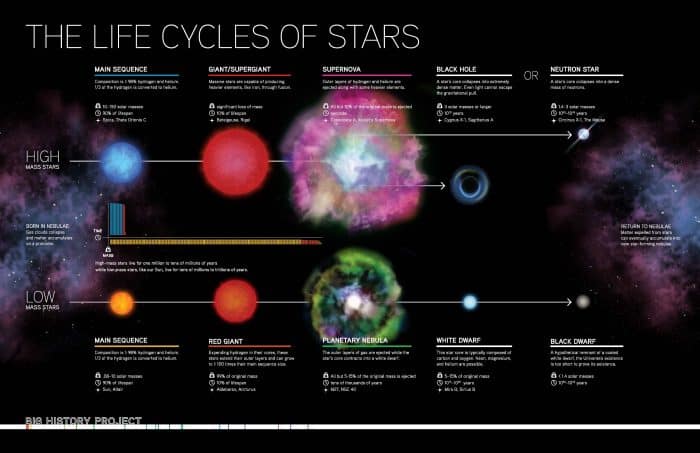
Since the beginning of time man has looked to the stars to navigate, to tell the future, and to investigate the origins of the universe.
The most ancient civilizations saw in the stars something magnificent, something greater than themselves. When they looked to the heavens, they foretold fame and fortune, famine, and death.
Today, thanks to science and innovation we know a lot more about what happens in the universe. We’re able to search beyond our own galaxy to see what has happened millions of light-years earlier, in effect seeing into the past.
Never before have humans been able to get so close to the heavenly bodies, known as stars. Every day we learn more and every day we realize how much we still have to learn. Man’s fascination with the heavens does not abate
This infographic offers a lovely view of what happens in the life of the stars. The life cycle of a star is determined by its mass, and our sun is relatively small and at the end of its life. In its death throes it will become a planetary nebula, and then a white dwarf, before it cools completely, transforming to a black dwarf. Larger stars will eventually explode and scatter their remains across a wide area in a Super Nova, eventually becoming a neutron star or if they’re big enough, a black hole.



